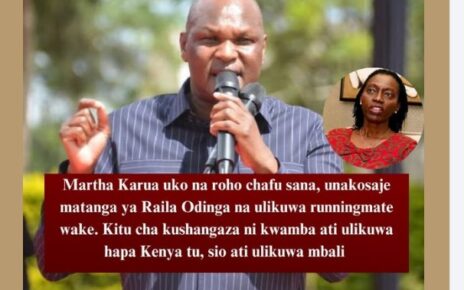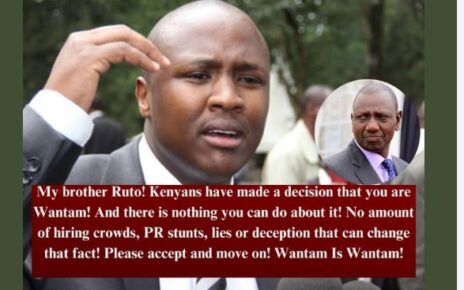Through a new World Bank-funded initiative dubbed NYOTA (National Youth Opportunities Towards Advancement), the President hopes to turn youthful frustration into hope — and perhaps, votes.
The ambitious plan targets over 820,000 vulnerable young Kenyans with training, business support, savings incentives, and start-up grants of KSh 50,000 each. It will run for five years, covering all 1,450 wards and focusing on youth aged 18 to 29, and up to 35 for persons with disabilities.
Gen Z Skepticism Shadows Ruto’s NYOTA Program
Barely a year ago, many of the same young people now targeted by NYOTA were on the frontlines of anti-government protests. They accused Ruto’s administration of overtaxing citizens and ignoring the plight of the unemployed.
Now, the same youth are being courted with empowerment programs, grants, and lofty promises.
For critics, this is more than coincidence.
“Ruto has realized that the youth he once dismissed as noisy are the same ones who can decide his political fate,” says governance analyst Mark Bichachi.
“NYOTA might be more about rebranding himself to Gen Z than solving youth unemployment.”
Inside the Rollout of Ruto’s NYOTA Program
On Monday, all Principal Secretaries fanned out across the 47 counties to lead NYOTA sensitization forums alongside governors, MPs, and administrators — a rare show of national coordination.
At every stop, the message was consistent: the government is empowering the youth to create jobs.
“The government is helping young people drive development,” said Public Health PS Mary Muthoni in Kirinyaga.
“NYOTA will help unlock youth potential,” added ICT PS John Tanui, emphasizing digital skills and savings support.
However, as images of packed rallies circulated online, many Kenyans saw more politics than policy.
“This feels like a campaign tour in disguise,” one user posted on X. “Why the rush? Why now?”
Is NYOTA a Rebrand of the Hustler Fund?
While the government insists the Hustler Fund “uplifted millions,” critics say its impact has been modest. NYOTA, however, shifts from loans to grants, with the World Bank’s oversight adding a layer of credibility.
Yet, doubts persist.
“How do we ensure this doesn’t become another NYS scandal?” asks youth activist Brian Njoroge.
“We’ve seen youth funds vanish before. What makes this different?”
The Politics Behind the Promise
President Ruto first launched NYOTA during International Youth Day 2025 in Kakamega County, branding it as the ultimate answer to youth joblessness.
But as 2027 draws near, analysts say NYOTA’s focus has shifted from economics to political redemption.
“It’s not just about jobs, it’s about trust,” says political commentator Daisy Achieng.
“Can Ruto buy back belief from a generation that feels deceived? That’s his real challenge.”
The first batch of 54,000 beneficiaries is expected to receive their KSh 50,000 grants this year, alongside entrepreneurship training, skills certification, and mentorship for informal workers such as mechanics, electricians, and tailors.
The program’s architects describe it as “hope, empowerment, and action.” But on the streets, optimism is muted.
“Fifty thousand shillings can’t fix a system that keeps us poor,” says Nancy Wanjiru, a 25-year-old jobless graduate from Pipeline. “They think we can be bought. We just want jobs, not handouts.”
Hope or Handout?
President Ruto’s NYOTA program is being sold as a new dawn for Kenya’s youth — a promise to uplift the forgotten and rekindle faith in government.
But as the countdown to 2027 begins, one question lingers:
Will NYOTA truly empower a generation — or simply buy time until the next election?
Because for Kenya’s disillusioned youth, belief, not business grants, may be the hardest thing to restore.



